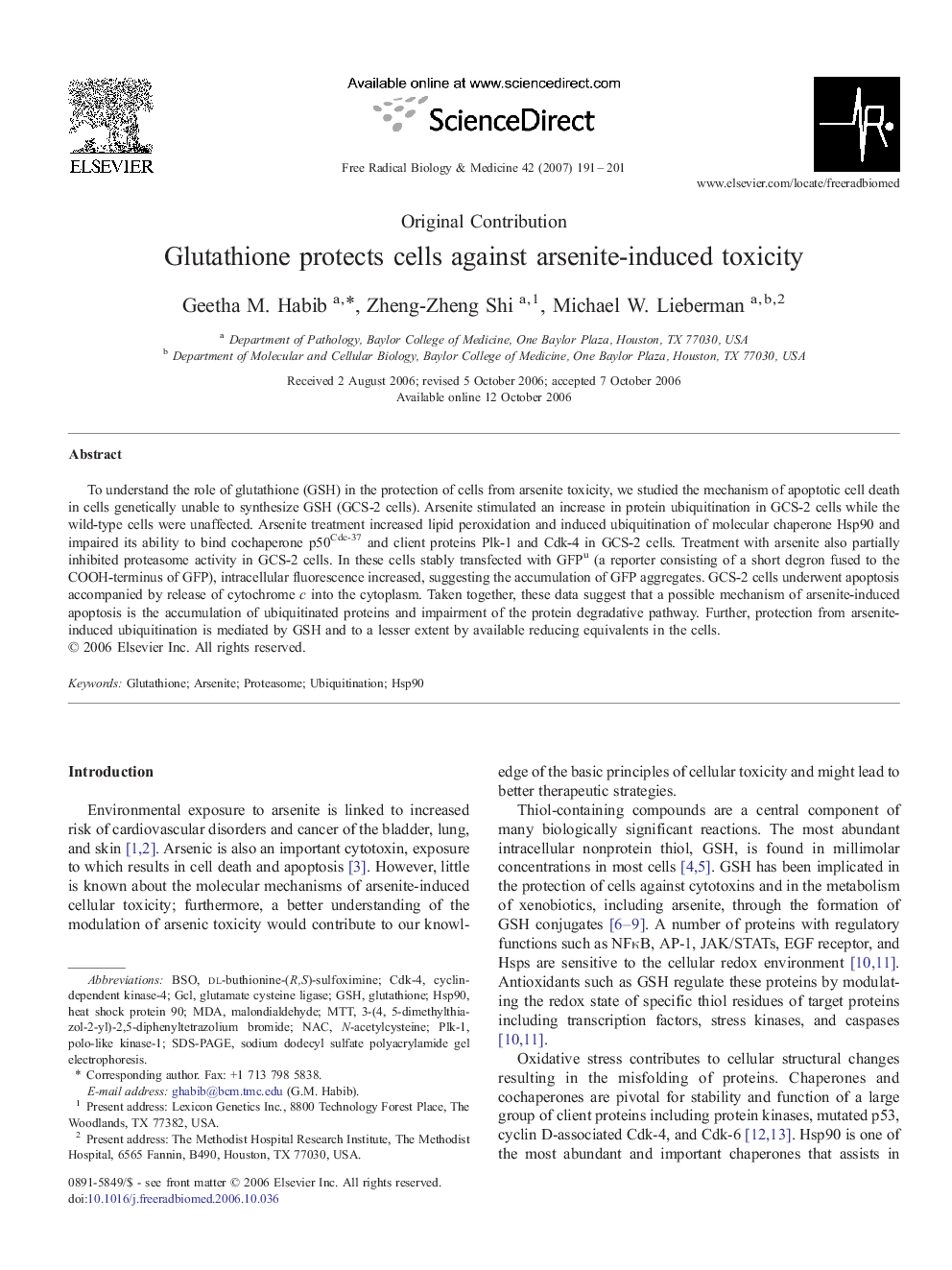| Article ID | Journal | Published Year | Pages | File Type |
|---|---|---|---|---|
| 1911284 | Free Radical Biology and Medicine | 2007 | 11 Pages |
To understand the role of glutathione (GSH) in the protection of cells from arsenite toxicity, we studied the mechanism of apoptotic cell death in cells genetically unable to synthesize GSH (GCS-2 cells). Arsenite stimulated an increase in protein ubiquitination in GCS-2 cells while the wild-type cells were unaffected. Arsenite treatment increased lipid peroxidation and induced ubiquitination of molecular chaperone Hsp90 and impaired its ability to bind cochaperone p50Cdc-37 and client proteins Plk-1 and Cdk-4 in GCS-2 cells. Treatment with arsenite also partially inhibited proteasome activity in GCS-2 cells. In these cells stably transfected with GFPu (a reporter consisting of a short degron fused to the COOH-terminus of GFP), intracellular fluorescence increased, suggesting the accumulation of GFP aggregates. GCS-2 cells underwent apoptosis accompanied by release of cytochrome c into the cytoplasm. Taken together, these data suggest that a possible mechanism of arsenite-induced apoptosis is the accumulation of ubiquitinated proteins and impairment of the protein degradative pathway. Further, protection from arsenite-induced ubiquitination is mediated by GSH and to a lesser extent by available reducing equivalents in the cells.
